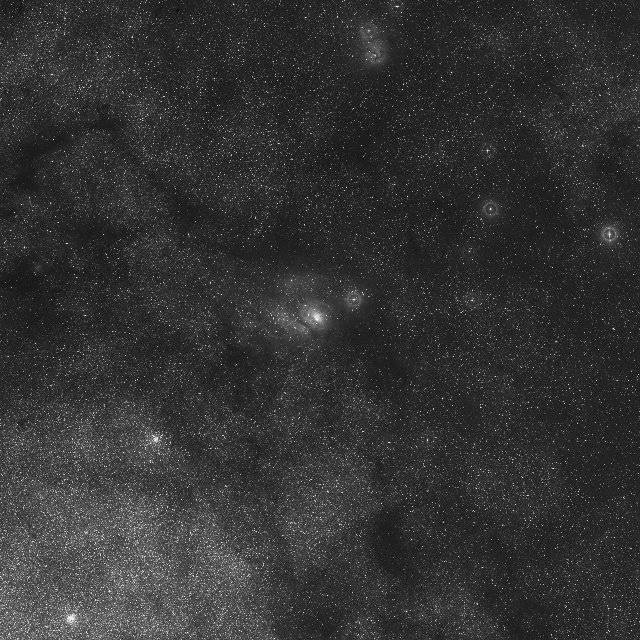Wide Field Eyepieces
The widest field eyepiece physically possible with a 1.25" barrel is a 24mm focal length with an apparent field of view (AFOV) of 68°. Wider views require a 2" diagonal and eyepiece. A 2" barrel eyepiece with say, 72° AFOV can be fully used in a 2" sleeve only. The AFOV would shrink to about 58° in a 1.25" sleeve.
Before You Buy
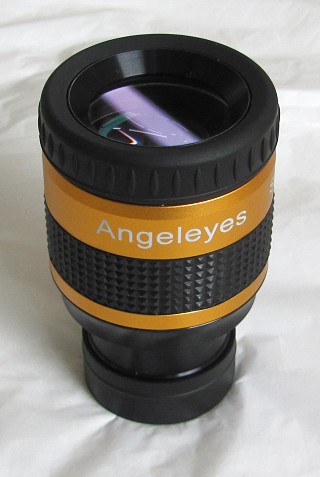
The 27mm/70° SWA Erfle 1.25" eyepiece apparently manufactured by Tianyuan Star Optical Instruments Co., Ltd. under various brands, such as Angeleyes, and offered by various sellers does not sport a 70° wide apparent field. In fact it has a 28mm field stop and is only 53° wide. Reputed sellers like TS-Optics have corrected it. Although the "Angeleye" arrived with slightly contaminated lens surfaces (not necessarily a manufacture problem), mechanical finish and optical performance are looking good. The shorter eyepieces in the same series are said to feature true 70° AFOV (more likely 60°?). An official company website of Tianyuan Star Optical could not be found.
This 27mm/70° eyepiece as advertised is physically impossible. Any eyepiece where the field stop fits within the 1.25" barrel is possible but a 24mm with 68° AFOV is the maximum. A 27mm will have the same maximum field stop diameter if it has 60 degrees AFOV. No intention of deceit assumed, but a professional manfacturer and seller is expected to be aware of this limitation.
While high optical quality was a secondary aspect, we purchased this low-cost eyepiece for the Svbony autoguiderscope (good!) hoping for a wide field, without ad-hoc noticing the physical limitation ourselves (own goal).
Feeding this issue back to the seller Kesoto via Amazon Japan, they promptly offered a near full refund. This seller assumed responsibility although the erroneous specification is not to be blamed on him. Respect and case resolved without traces.
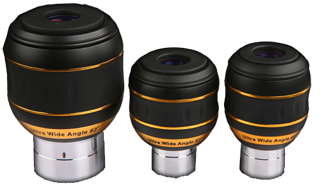
For example, Sky-Watcher's 82° 'Panorama Eyepieces' come in 7mm, 15mm and 23mm focal lengths, while the 23mm only (left) has a 2" barrel - for a good reason.
Anyway, for the human eye 68-70° is the maximum for a full overview. Wide angle eyepieces are popular for offering impressive views but are not essential when
you concentrate on a single object in the center of the view.
Pick: Explore Scientific 18mm/82°
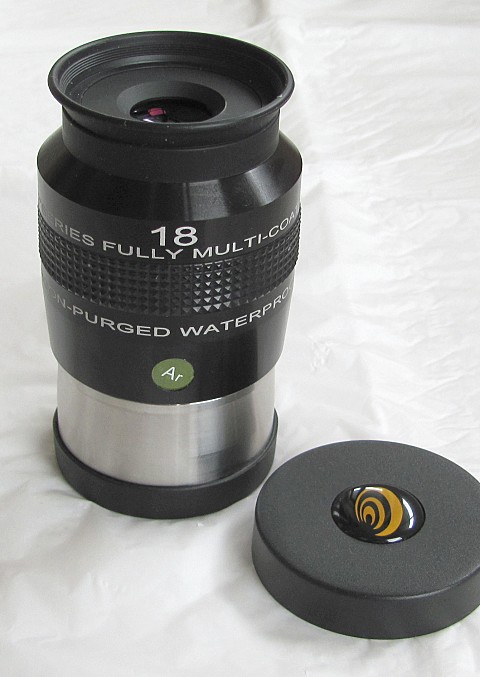
Interestingly, the Explore Scientific 18mm/82° eyepiece specified with a field stop of Ø25.3mm comes with a 2" barrel. Some say, this is for minimizing vignetting in fast telescopes, although the human eye is not very sensitive to vignetting. The first lens is near the very front of the barrel, assumingly a Smyth/Barlow-like lens (telenegative). Though the diameter of the field stop is specified Ø25.3mm, the effective diameter is larger because of the Barlow effect and would not fit in a 1.25" barrel. The tapered barrel of the ES 18mm/82° ensures that the eyepiece is less likely to fall out of the focuser once the lock-screw loosens. Since it is water-proof and argon purged, the eyepiece cannot be disassembled for cleaning inward lens surfaces, but thanks to the gas filling contaminants and fungus are prevented from generating inside.
The view through is contrast-rich and clear. Unfortunately, the outer edge of the view is dominated by an orange-tinted halo. According to the manufacturer, its 82° and 100° series are designed with priority on field flatness for observation of dark DSOs. The view of the Lagoon Nebula, Messier 8, through this eyepiece is a treat indeed. Threaded for 2" filters, the eyepiece offers a wide field and an advertised eye relief of 13mm, but you need to get your eye closer than that to enjoy the specified field of view.
By the way, the beautifully designed Explore Scientific product boxes are true keepers, sturdy, reuseable and recyclable. No more need for Christmas wrapping.
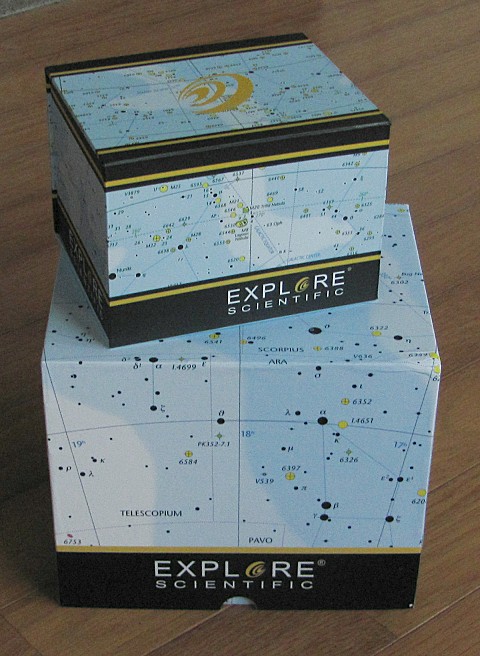
Next: 2-inch UW 40mm/80°
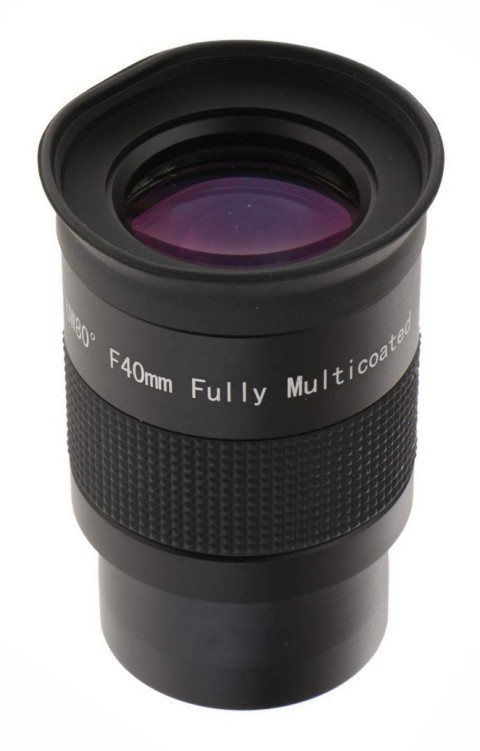
Sold by Kesoto via Amazon Japan at around 80 USD, this 40mm focal length Plössl eyepiece (5 elements, 3 groups) is specified with an AFOV of 80° (more likely <70°) and 28mm eye relief. Further, the online undisclosed manufacturer claims that the eyepiece body is made of aluminum alloy and its lenses of optical glass, fully multi-coated plus an HD green coating. The barrel is tapered to prevent easy fall out of the focuser. the barrel can be unscrewed and serve as an 2-inch camera nosepiece adapter with a Ø48mm T-ring. Kudos to the developer for this thoughtful touch. The eyepiece comes in a decent bolt-style container without need for caps, worth a further compliment. A paper sticker reads 'Tianlang 2" PL40', assuming that the manufacturer's name is Tianlang (or Tianyang?). No official company website found.
The use of this eyepiece mostly requires an extension tube for focus in spite of a diagonal. The view at terrestrial objects with this eyepiece is brilliant while about 90% of the field is sharp and focused. The same applies to the of course small and bright moon. No false color, a sharp contrast, in particular with an ND20 as moon filter. Tested with a TS-Optics 71SDQ (FL=450mm) and SkyWatcher BKP150 Newtonian (FL=750mm). Because of the false FOV only 3 of 5 stars.
Before buying a 'long' eyepieces, say 30 to 50mm, find the diameter of your fully dilated eye, divide it by your telescope's aperture to obtain the maximum eyepiece focal length that matches your eyes' potential to fully cover a given exit pupil of an eyepiece. The resulting magnification is the lowest useful magnification of your telescope tailored to your eyes.
Example Ø150mm/FL=750mm telescope:
150mm aperture / 6mm dilated diameter = a 25mm eyepiece. Magnification = 750mm/25mm = 30x.
